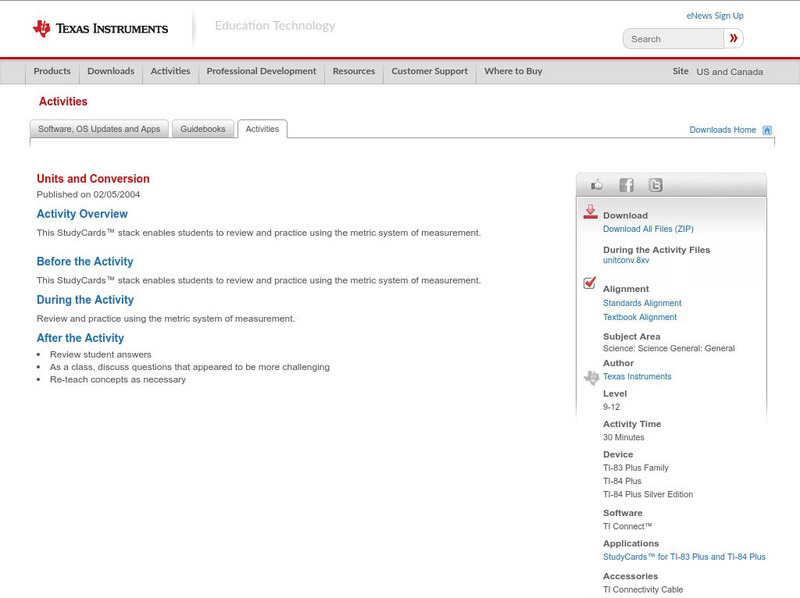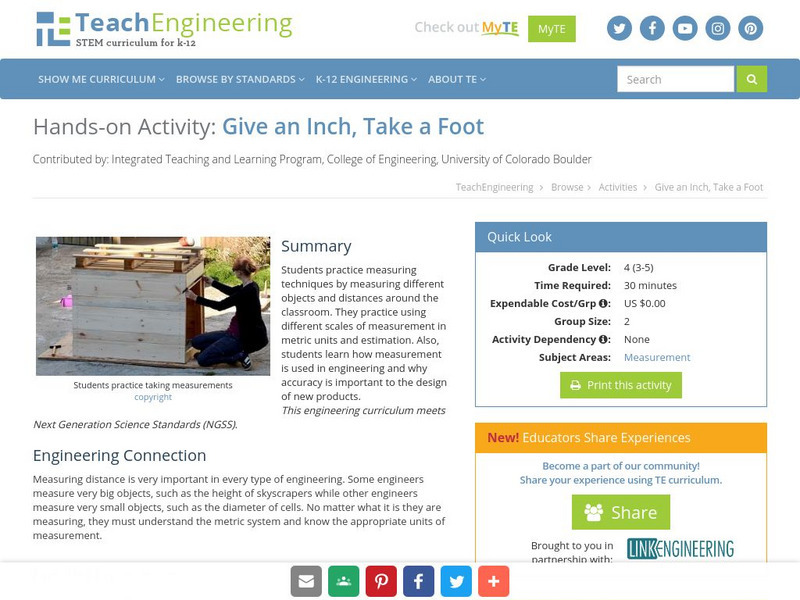NSW Department of Education
Relationships Between Formal Measurement Units: Measure and Record Mass in Kilograms and Grams
Teach the masses about the metric system with this hands-on measurement lesson. Given a fruit or vegetable, learners estimate, measure, and convert its mass using the metric units gram and kilogram.
National Nanotechnology Infrastructure Network
Noodling Around: Powers of Ten
How many noodles long is your classroom? Find out when engineers of all ages explore measurement through the use of pool noodles. With the noodles pre-cut to certain metric lengths, the activities could be used to introduce the metric...
Star Date
Solar System Scale Model Demonstration
Explore outer space and decorate your classroom with an astronomy project. Learners create a visual model with the creation of a scaled solar system using different sized balls.
National Nanotechnology Infrastructure Network
Shrink Me!
The incredibly shrinking meter—decimeters to centimeters, to millimeters, and now to nanometers! Learners may have a difficult time visualizing particles on a nanoscale. Help them see a little clearer using a well-designed lesson...
Teach Engineering
An Inflated Impression of Mars
Help your class understand the magnitude of the distance between Earth and Mars with an activity that asks small groups to use balloons to create scale models of the Earth, Moon, and Mars. Class members figure out the distances...
Illustrative Mathematics
Paper Clip
With minimal setup and maximum freedom, young geometers are encouraged to think outside the box on a seemingly simple application problem. Though the task seems simple, measuring a given paper clip and finding how many 10 meters can...
Teach Engineering
What is a Nanometer?
Teams learn about the size of a nanometer by measuring objects and converting those measurements. A worksheet then tests the groups' abilities to use nanometers by having them determine the size of objects that are too small to...
National Nanotechnology Infrastructure Network
Size and Scale – Learning about Measurement
Can you visualize one billionth of a meter? It's not easy to understand the scale of a nanometer. Learners use a hands-on lesson to develop an understanding of the size of a nanometer in comparison to common objects. They walk away with...
Illustrative Mathematics
How Thick Is a Soda Can I?
The humble soda can gets the geometric treatment in an activity that links math and science calculations. After a few basic assumptions are made and discussed, surface area calculations combine with density information to develop an...
Exploratorium
Tired Weight
You don't need a scale to determine weight. This activity provides a way to use the concepts of air pressure and surface area to determine the weight of a vehicle by calculating the amount of weight each tire supports.
DiscoverE
LIDAR: Mapping with Lasers
We would be lost without maps! How are they made? Introduce junior topographers to LIDAR technology with a fascinating activity. Set up a mock city, then have learners operate a laser measure to determine the shape of the landscape using...
Curated OER
Ant and Elephant
Have you ever wondered how many ants make up an elephant? Inquisitive minds will be amazed as they use scientific notation to compute and compare the mass of an elephant to an ant. Have participants make guesses and see how close they...
Teach Engineering
Human Power
How many humans does it take to power a light bulb? The 10th part of a 25-lesson Energy Systems and Solutions unit has learners conduct an experiment to calculate power. They then use the results to determine how many classmates they...
Curated OER
Shadow Chasing
The students compare themselves and their shadows to various objects big and small. Students use their data to set up proportions to solve.
Texas Instruments
Texas Instruments: Imperial to Metric Time Line
A number line showing the conversion of Imperial units to Metric units.
Texas Instruments
Texas Instruments: Metric to Imperial Time Line
A number line showing the conversion of Metric units to Imperial units.
Math Is Fun
Math Is Fun: Metric System of Measurement
The metric system of measurement is explained. Particularly interesting is the table of prefixes for numbers that are exceptionally huge or small.
TeachEngineering
Teach Engineering: Robot Wheels!
Students solidify their understanding of the terms "circumference" and "rotation" through the use of LEGO MINDSTORMS NXT robotics components. They measure the circumference of robot wheels to determine how far the robot can travel during...
American Chemical Society
American Chemical Soc.: Best of Wonder Science: Measure Yourself in Metric [Pdf]
Activities where students take turns measuring their height, the width of parts of the hand, and the distance jumped using metric units.
National Council of Teachers of Mathematics
The Math Forum: Intro to Measurement for Primary Students
This site from the Math Forum is a great introduction to measurement for primary students. Each measurement activity has four components: interactive, manipulative-based project; technology; paper/pencil practice; literature connection.
Other
Conversions for Time Measurement
This site allows you to convert various time measurements. Example seconds to days.
Math Is Fun
Math Is Fun: Measuring Metrically With Maggie
Metric units for volume, mass, length and temperature are explained to a cute little alien called Maggie. There are lots of real life examples for comparison that younger children will understand.
Texas Instruments
Texas Instruments: Units and Conversion
This StudyCards stack enables students to review and practice using the metric system of measurement.
TeachEngineering
Teach Engineering: Give an Inch, Take a Foot
Students practice measuring techniques by measuring different objects and distances around the classroom. They practice using different scales of measurement in metric units and estimation. Also, students learn how measurement is used in...



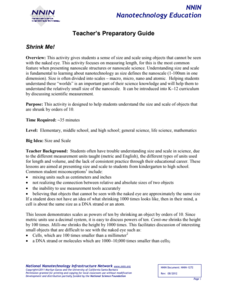



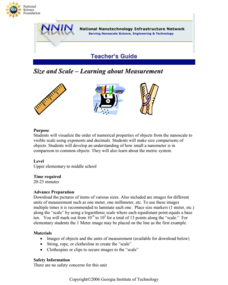



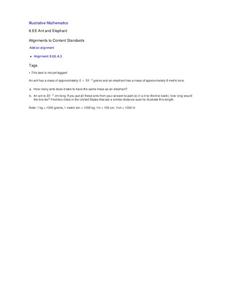
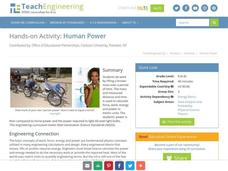
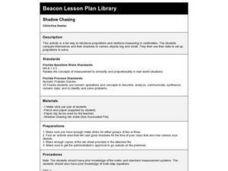

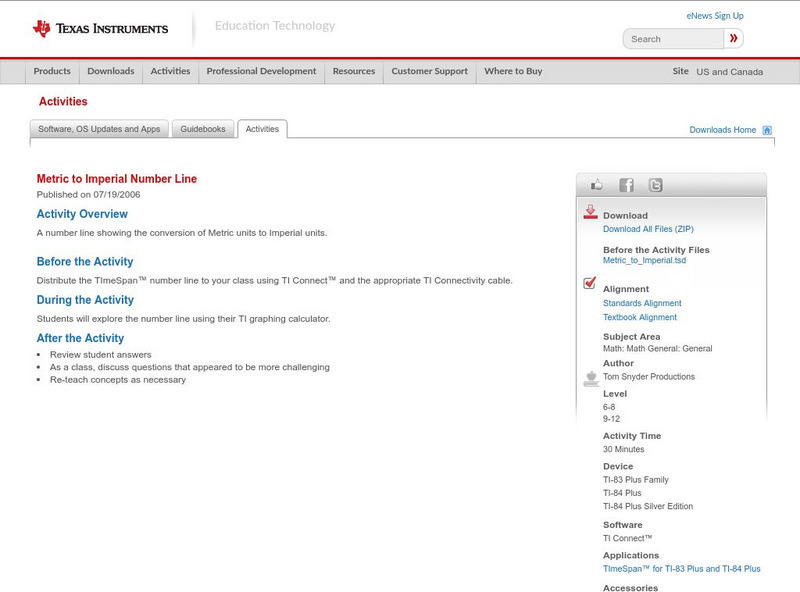

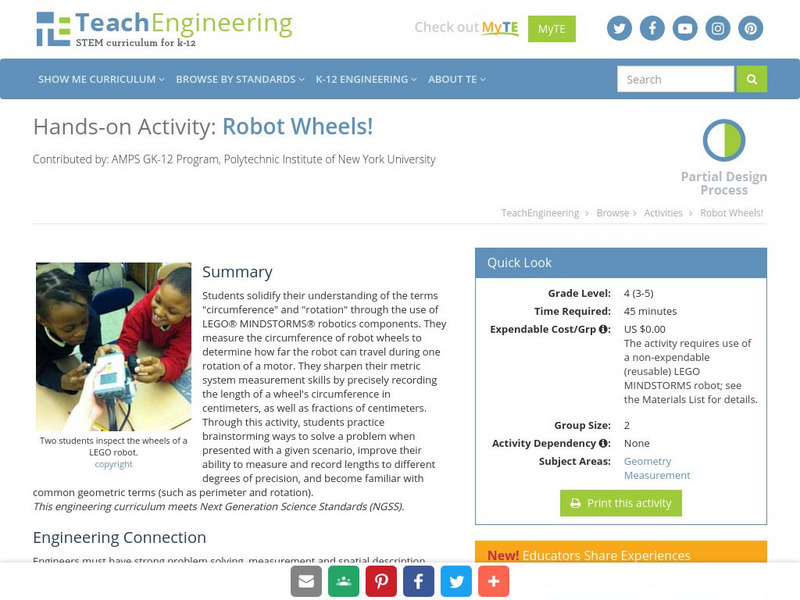
![American Chemical Soc.: Best of Wonder Science: Measure Yourself in Metric [Pdf] Activity American Chemical Soc.: Best of Wonder Science: Measure Yourself in Metric [Pdf] Activity](https://d15y2dacu3jp90.cloudfront.net/images/attachment_defaults/resource/large/FPO-knovation.png)



